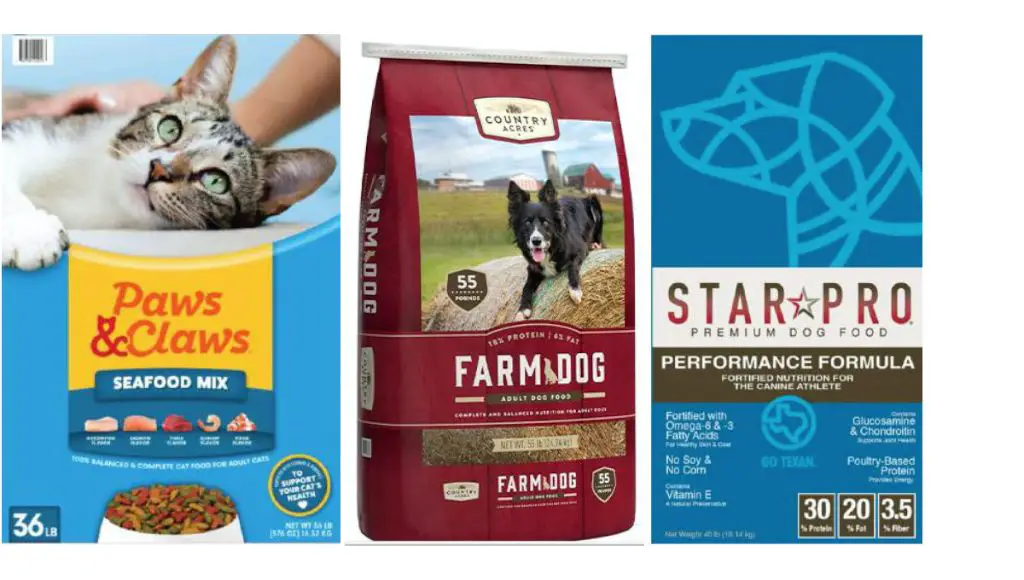Introduction
Protein is an essential macronutrient that our bodies need to function properly. From building muscle mass to supporting hair and nail growth, getting enough high-quality protein should be a priority in any healthy diet.
With the popularity of high-protein diets, some people have started to wonder whether dog food could be a viable source of protein for humans. After all, dog food contains large amounts of meat-based protein. But is taking a bite of your pup’s kibble actually safe or healthy for people?
This article will explore the potential benefits and risks of humans eating dog food. We’ll look at the differences between human and canine nutritional needs, ingredients commonly found in dog food, and what experts say about this unorthodox protein hack.
Nutritional Needs of Humans vs. Dogs
When it comes to protein needs, there are some key differences between humans and dogs. Protein is an essential macronutrient that helps build and maintain muscle mass. However, the protein requirements differ for humans compared to dogs.
The Recommended Dietary Allowance (RDA) for protein for adult humans is 0.8 grams of protein per kilogram of body weight per day. This equates to around 56 grams of protein per day for the average sedentary man and 46 grams per day for the average sedentary woman.
In comparison, the Association of American Feed Control Officials (AAFCO) recommends a minimum of 18% protein in adult dog foods on a dry matter basis. This equates to around 45 grams of protein per 1000 calories consumed. Since dogs have a higher metabolism than humans, they tend to require more protein per calorie in their diets compared to humans.
Additionally, dog foods may contain protein from ingredients like poultry meals, fish meals, lamb meals and meat by-products. These animal-based protein sources provide complete proteins with all the essential amino acids dogs require in ratios fit for canine health. On the other hand, human protein needs can be met through a variety of plant and animal sources.
In summary, while dogs have a higher protein requirement per calorie compared to humans, their protein sources and complete amino acid profile needs differ as well. This makes dog food a poor protein source for meeting human nutritional requirements.

Ingredients in Dog Food
Dog foods contain a variety of ingredients to provide complete and balanced nutrition for dogs. The main ingredients in most dog foods are:
- Proteins – Dogs require protein for growth and tissue maintenance. Common protein sources in dog food include chicken, beef, lamb, turkey, eggs, fish and smaller amounts of organ meats like liver. Some dog foods also contain plant-based proteins like soybean meal or peas.
- Carbohydrates – Carbs provide dogs with energy and dietary fiber. Common carb sources are grains like corn, wheat, rice, oats, barley and millet. Starchy veggies like potatoes and sweet potatoes are also used.
- Fats and oils – Fats provide concentrated energy for dogs. Common fat sources are chicken fat, fish oil and plant oils like sunflower, soybean or flaxseed oil.
- Vitamins and minerals – A vitamin and mineral premix is added to ensure dog foods contain required nutrients like calcium, phosphorus, magnesium, iron, zinc, copper, potassium, sodium, chloride, vitamins A, B, D, E and K.
The specific ingredients and ratios vary between dog food brands and formulas based on the nutritional targets for different life stages, activity levels, and breed sizes of dogs.
Nutritional Value of Dog Food for Humans
When evaluating the nutritional value of dog food for human consumption, the key aspects to consider are the protein, vitamin, and mineral content. Dog food can contain comparable levels of protein to some foods designed for humans. However, the protein quality may differ, with plant-based proteins in many dog foods potentially providing less bioavailable protein per gram than animal-based proteins more predominant in human foods. The vitamin and mineral content of dog foods varies widely by brand and formulation. Some dog foods may provide complete and balanced nutrition, while others are more focused on supplemental nutrition balanced by other foods in a dog’s diet. Minerals like calcium and phosphorus are particularly important for canine health and found in higher levels in dog food compared to typical human dietary needs. So dog food is not nutritionally optimized for humans, but could provide significant protein, vitamins and minerals in a balanced diet.
Potential Benefits of Eating Dog Food
While not generally recommended for humans, there may be some potential benefits associated with eating dog food in certain situations.
One potential benefit is convenience. Dog food is relatively easy to store and prepare compared to human food options. Canned and dry kibble varieties in particular can simply be opened and eaten immediately without any extra preparation or cooking required.

Another potential benefit is cost. Many dog food brands are relatively inexpensive compared to many human-grade foods. Large bags of dry dog food may provide more total calories for a lower cost than human food options.
However, while convenient and potentially cost-effective, dog food lacks many important nutrients needed in a human diet. The potential benefits of convenience and cost may not outweigh the potential health risks of relying on dog food as a protein or calorie source.
Potential Risks of Eating Dog Food
While dog food may seem like an easy way to get more protein in your diet, consuming dog food regularly could pose some health risks for humans.
One major risk is potential nutritional imbalances. Dog food is formulated to meet the specific nutritional needs of dogs, which differ from human requirements in a few key ways. For example, dog food tends to be much higher in protein and fat versus carbohydrates compared to human diets. Eating dog food as a significant portion of your diet could lead to excessive intake of some nutrients and inadequate intake of others over time.
Dog food may also contain pathogens that can cause foodborne illnesses. Dog food is held to lower safety standards compared to human food in terms of allowable levels of bacteria like Salmonella and E. coli. While dogs’ stronger stomach acid helps kill these pathogens, humans are much more susceptible to getting sick from eating contaminated dog food.

Overall, substituting dog food for regular meals could negatively impact your health due to the differences in nutritional requirements between humans and canines. It’s best to stick to people food and consult a dietitian if you need help meeting your protein needs safely.
Expert Opinions
Many health experts advise against humans eating dog food as a protein source.
“Dog food is formulated for the nutritional needs of dogs, which differ substantially from the nutritional needs of humans,” said Dr. Sarah Wilson, a pediatrician. “While dog food contains protein, it does not have the right balance of amino acids, vitamins, and minerals required in the human diet.”
“I would strongly recommend against humans consuming dog food. It’s simply not designed for human consumption,” said Jill Martin, a registered dietitian. “Dog food is lacking in vital nutrients like iron, calcium, folate, fiber and more that humans need. It’s also very high in protein and minerals that can be harmful in large quantities.”
“Eating dog food once in a while because you have nothing else in the house is one thing, but I would not recommend making it a regular part of your diet. The risks outweigh any potential benefits,” cautioned Dr. Michael Chen, a gastroenterologist. “Some dog foods may contain additives, preservatives and fillers that are not proven safe for human consumption.”
“While protein is important, I would suggest looking at healthier and safer sources like lean meats, eggs, legumes, nuts and seeds rather than unconventional sources like dog food,” said Laura Myers, a nutritionist. “Dog food is not regulated or reviewed for human consumption.”
Recommendations for Better Protein Sources
While dog food may seem like an easy way to add more protein to your diet, there are many healthier and safer options for getting the protein that humans need. Here are some excellent sources of protein to consider instead of dog food:
Lean Meats: Meat is one of the highest and most bioavailable sources of protein. Opt for leaner cuts of beef, pork, chicken, and turkey. Grass-fed and organic meats also provide added nutritional benefits.
Beans: Beans of all types are packed with plant-based protein. Try adding lentils, black beans, kidney beans, chickpeas, and other beans to soups, salads, stews, and more. Canned beans are convenient if you don’t have time to cook dried beans from scratch.
Eggs: Eggs are often called a perfect protein because they contain all 9 essential amino acids. They’re also affordable, versatile, and easy to cook.
Greek Yogurt: Choose plain nonfat Greek yogurt for an excellent source of protein without excess saturated fat. Greek yogurt tends to be higher in protein than regular yogurt.
Edamame: These young soybeans are high in plant-based protein. Purchase them fresh or frozen and add to stir-fries, soups, and salads.
By incorporating more of these healthy, natural protein sources into your meals and snacks, you can get your protein needs met without having to resort to dog food.
When Dog Food Might Be an Option
In extreme or emergency survival situations, dog food can provide sustenance when no other food options are available. However, it should only be consumed when absolutely necessary and when facing starvation.
Situations where dog food may need to be relied upon include:

- Being lost in the wilderness without adequate food
- Natural disasters that cut off regular food supplies
- Economic crises or famines with severe food scarcity
- Wars and conflicts where food is dangerously limited
Consuming dog food in these life-or-death circumstances can provide calories and nutrients to help a person survive until rescued or until regular food supplies are restored. While not recommended for regular consumption, dog food in small quantities may be better than starving.
That said, relying on dog food in emergencies should only be done when absolutely needed. It does not provide optimal nutrition and can pose health risks if eaten routinely by humans. Seeking more suitable human food should be a priority as soon as possible.
Conclusion
In conclusion, while dog food does contain protein, the sources and levels of protein and other nutrients are not designed with human dietary needs in mind. Dog food typically has higher levels of protein and fat than an optimal human diet requires. The ingredients, quality controls and processing of dog food also differ from human grade foods.
Rather than turning to dog food as a protein source, humans would be better off focusing on high quality, whole food sources of protein designed for human consumption. This includes lean meats, eggs, legumes, nuts, seeds and dairy products. With some planning and nutrition awareness, people can meet their protein needs from regular grocery store items without the need to eat pet food.
In some rare emergency situations where no other food sources are available, eating dog food in small amounts for a very short period of time may be an option to survive. But it should never become a routine part of the human diet. The risks from excessive fat, minerals and bacteria make dog food a poor choice nutritionally.
In summary, while dog food contains protein, it should be avoided as a food source for people. With a balanced whole food diet, humans can get all the high quality protein they need from regular food items without needing to eat animal feed.